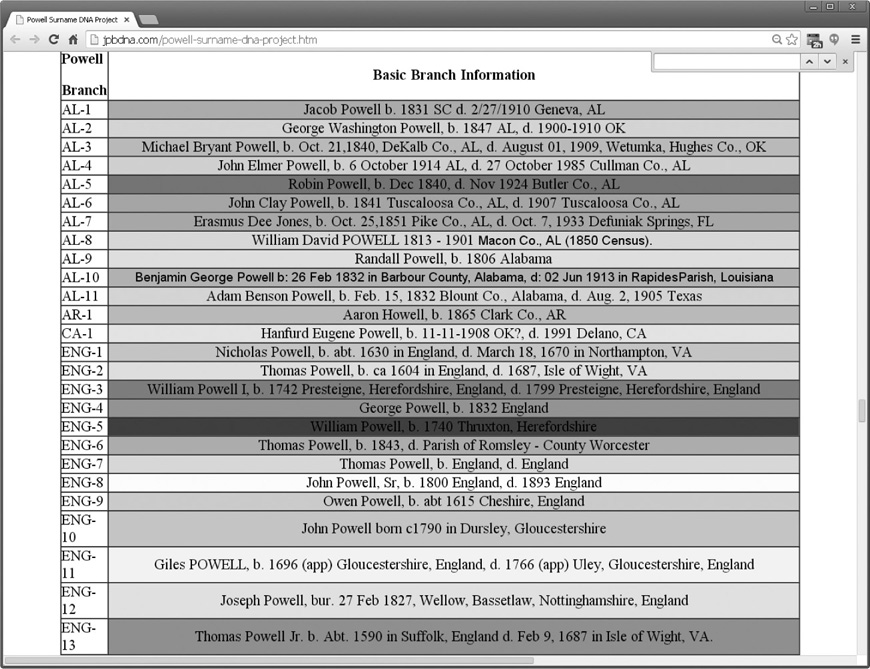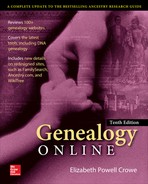The most important advance in genealogy in the last 20 years after the Internet is DNA genealogy. Many different companies and websites can help you pursue this aspect of family history. However, this field has jargon and terms that can make your head spin, so let’s look at that part first.
DNA (deoxyribonucleic acid) is a nucleic acid molecule. It makes up the chromosomes that contain genes. Genes determine the hereditary characteristics that pass from one generation to the next. You have seen television shows where DNA solved crimes; now it is being used to solve genealogy!
As far as chromosomes go, you will remember from high school biology that girls have XX and boys have XY. That Y-chromosomechanges (mutates) very slowly because the majority of the Y-chromosome DNA does not mix (recombine). The Y-chromosome is passed down the male line from father to son, just as surnames are in Western societies, so using the Y-chromosome for genealogy can tell you a lot about common male ancestors. Using the mitochondrial DNA (mtDNA) can trace female ancestry the same way.
So you can get tests on YDNA for male ancestors and mtDNA for female ones. But that is not all. You can also get autosomal DNA, which tests for all the other chromosomes besides the ones that make you a boy or a girl.
With DNA testing, you can find out if two people are descended from a common ancestor, if you are related to another group of people with the same surname, whether the paper trail you are following is accurate, and get clues to what regions of the globe your ancestors came from.
The test results will be full of jargon, which I will try to describe a little bit here.
An allele, or marker, refers to at least one (maybe two or more) alternative forms of a gene arising by mutation found at the same place on a chromosome. It is one way to tell two people are related.
A haplogroup is a broader indicator. It is more about ancient ancestral groups, stretching back to prehistory, and is a way to map the migration of human beings all over the globe.
It’s easiest to explain by example. Anthony Moore, a genetics graduate student at Duke University, did a 23andMe DNA test, partially out of professional curiosity and partially because the family knew very little about their genealogy. The test had some surprises, he said.
“The percentage of European admixture was higher than I would have guessed,” Anthony said. “Also, now I can pinpoint that my mom’s family likely hails from Southeastern Africa, which I did not know before. It identified distant cousins (fifth and sixth cousins) I could contact. I declined, though if they had identified as closer familial relationships, I would have been tempted.”
DNA Overview
Judy Russell is a genealogist with a law degree who writes the blog The Legal Genealogist. She blogs to help folks understand the often mysterious and even unfathomable legal concepts and terminology that are crucial to pursuing family history. She also covers DNA genealogy, especially her own successes and challenges with it. Judy holds a bachelor’s degree in journalism and political science from George Washington University in Washington, D.C. and a law degree from Rutgers School of Law – Newark.
Judy said in her opinion is it never too early to begin your DNA genealogy, and indeed, should become as standard a practice as searching for wills and deeds.
“It’s only part of the plan; it can only work when it’s used with the usual paper-trail genealogical research and is never done instead of the paper-trail work. But it’s [a] part that can steer you in the right direction from the outset,” Judy said.
Just for an example, Judy said one of her ancestors was constantly in trouble with the law—so much that she suspected he might have changed his name in trying to stay one step ahead of the law. One simple YDNA test for a direct male line ancestor told her the ancestor did indeed keep his surname through it all. But if he had changed it and she had no DNA test, she might have spent years chasing the wrong bloodline.
There are limits to what the DNA tests can do, however. For example, more than five generations back, autosomal DNA tests may not prove what you need to know. With the autosomal DNA, your chances of making a match decrease with every generation. For a second cousin—that is, you two have a common great-grandparent—it is very accurate. Results are about 90 percent accurate at the third cousin level, about 50 percent accurate at the fourth cousin level, 10 percent accurate at the fifth cousin level, and less than 2 percent accurate beyond that. The autosomal DNA does recombine, or change, with generations. All of this is well described on Judy’s blog or at the wiki of the International Society of Genetic Genealogists (ISOGG).
However, as noted, the YDNA and mtDNA (tracing the mother’s line) are for markers that do not change much, that do not recombine or mutate very often. These markers can often remain valid back for hundreds if not thousands of years.
Judy pointed out that a DNA test can confirm or disprove a surname, or a direct paternal (YDNA) or direct maternal (mtDNA) link. It can confirm a link to a cousin via autosomal DNA, but it cannot disprove it. It can determine that two people are related.
“It can’t tell you how two people are related,” Judy said. “A 67-for-67 YDNA match could be uncle-nephew, or father-son, or paternal cousins, or some other relationship. Autosomal DNA can’t even tell me for sure that I’m not related to someone else; it can only tell me that I don’t share enough DNA with another person to be confirmed.”
Judy said to her, the best aspect of DNA genealogy is how it can show you what the paper trail cannot, but the biggest shortcoming is the lack of definition on how people are related.
“I’ve confirmed a circumstantial case as to the identity of one set of third great-grandparents through autosomal testing. My second great-grandmother was married before 1850, so she was never on the census by name in her parents’ household. There is no birth, marriage, or death record to be found and no will identifying her as a child of this couple. But the DNA evidence is compelling,” Judy said. The story, which was detailed in National Genealogical Society Magazine, October-December 2011, is summed up here.
Martin Baker (1797-1868) and Elizabeth Baker (1797-1854), buried in the Baker Cemetery in Parker County, Texas, were the brick wall in Judy’s case. Although the family had confidence Martin was a son of Revolutionary War soldier David Bake, Elizabeth was a mystery. Lots of census and bible records seemed to match up. Yet, one census record gave Elizabeth’s birthplace as Kentucky, instead of North Carolina, and a published report had Elizabeth Buchanan married to someone other than Martin Baker.
Well, YDNA and mtDNA can’t solve this sort of problem, as no unbroken line, male or female, could be shown in the paper trail. But autosomal DNA testing appeared.
Unlike YDNA and mtDNA, autosomal DNA “frees us from the tyranny of direct gender lines,” according to Megan Smolenyak Smolenyak in the article Judy wrote. Using DNA in chromosomes that are not gender specific allowed a comparison of a maternal uncle to a documented descendant of William and Elizabeth Buchanan.
“We have no other potential lines in common with the Buchanan descendant, and we match… We now know we are Buchanans,” Judy said.
The other big drawback, according to Judy: “I keep paying for DNA tests for cousins who match everybody else in my family but don’t share enough DNA in common to match me! (That needs a smiley face emoticon.)” She also said the percentages you are given about nationalities—say, for example, 75 percent British and 25 percent Italian—are better for cocktail party fodder than genealogy data.
Online DNA Sites
Of course, this twenty-first-century tool is all over the Web. Here are few places to start:
• The ISOGG, mentioned earlier, is at http://www.isogg.org/. Here you can find a place to study, discuss, and participate in many online DNA genealogy subjects.
• The National Genealogical Society has a free, self-paced course at http://www.ngsgenealogy.org/cs/genetic_genealogy.
• DNA Gedcom (http://www.dnagedcom.com/) is especially useful for adoptees, but anyone with a DNA test result can use their tools to compare and contrast your data with others. It has a very simple way to upload your 23andMe file, and several good documents explaining DNA genealogy.
• As of this writing, most of the major online genealogy sites such as Wikitree allow you to upload DNA results. So do the major genealogy software packages.
• Steve Morse has tried to demystify DNA genealogy at http://www.stevemorse.org/genetealogy/dna.htm.
• Genetealogy.com is a portal for DNA genealogy, forums, discussion groups, and surname groups.
So many companies now test and so many people have now participated that the databases of surnames is overwhelming. Still, if you search for the surname you are researching plus “DNA genealogy,” you will probably come up with a good site like the one in Figure 10-1. This is the Powell Surname DNA Project. All the participants have taken the test from FamilyTree DNA and are comparing results to find cousins. You can see in the second line that George Washington Powell is one of the ancestors identified in the tests; he is a son of my William Reason Powell, so I am definitely joining this group!

FIGURE 10-1. Surname-specific DNA sites and projects are appearing on the Web.
Wrapping Up
• DNA genealogy is becoming a common way to search family history.
• Tests include YDNA for male lines, mtDNA for female lines, and autosomal DNA for broader groups.
• DNA genealogy can help you break down brick walls.


